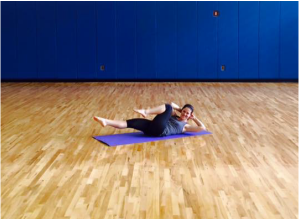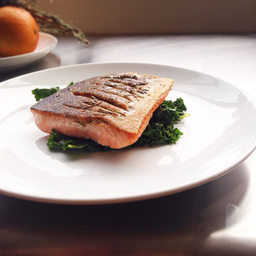
Strengthening and conditioning is paramount to optimal music making and performance. There seems to be a lack of specific information regarding healthy regimens for musicians, something The Healthy Musician Project is dedicated to pursuing. As a recent graduate from the Eastman School of Music with a Bachelor’s degree in Saxophone Performance and Music Education, I want to help other musicians improve their spinal health for increased freedom in playing. Music making is an elite sport that requires the body to be resilient and strong. I hope to share my experiences as a student, educator, dancer, and Pilates pedagogue with musicians everywhere.
I am a 5’3, 128 lb female, representing a minority of saxophonists I know. I used to study dance extensively from age four through middle school, so when I began studying music seriously I had a good understanding of injury prevention and body awareness. I knew I would have to strengthen my body to survive the sheer amount of hours expected to hold and play the saxophone in music school. At Eastman I was required to play the soprano, alto, tenor, and baritone saxophones. Each one exerts different challenges on the body. Over the course of four years I learned how to condition my core (abdominal and back muscles) to avoid injury and promote healthier posture in my playing. This journey started at the very beginning of my freshman year and continues today.
After my first week at Eastman I knew it was time to get serious about strengthening my back. After seven days of more playing than I had ever done before, I was left with intense, painful muscle knots in my upper back. I promptly joined the YMCA across the street from school and learned to use the weight machines – especially the pull down, seated row, and back extension. I used a small weight while paying full attention to what muscles I was targeting and how my back was moving. An Eastman friend told me about a Pilates class at the Y that I "had to try." I took some Pilates classes as part of my dance training, but I recalled them being repetitive and boring. I ended up being convinced to go to the class later that week with friends. The YMCA Pilates class uses a yoga mat, a ring made of rubber and foam, and a long weighted bar. While these tools seem like they would make the class harder, movements were more focused and easier to complete with these guides. Even though my core was on fire and it hurt to laugh that first week, I was hooked! After that single hour I didn't even notice the knots in my upper back that were troubling me. From that moment I knew I needed to continue Pilates to get relief from the intense daily saxophone playing I was doing.
The form of Pilates offered at the Carlson Rochester YMCA is called Integrated Movement=Xercise (IM=X for short). Joseph Pilates, a famous dancer, founded Pilates as a conditioning program for elite New York City ballet dancers. IM=X is an approach based on movement research that uses exercises from the Joseph Pilates method designed to be accessible to people from all walks of life. There is an emphasis on spinal elongation – creating space between the vertebrae. This methodology also draws from Alexander Technique to promote healthy breathing and alignment. The class is a series of exercises designed to strengthen the core. A strong core creates a healthy back, something that is truly essential for all musicians to play effectively.
After studying IM=X Pilates for four years at the YMCA, I decided to pursue this training method that can be so beneficial for musicians. I traveled to the IM=X Pilates headquarters in New York City days after graduating from Eastman to study with one of the main founders of IM=X. I now teach Pilates at the University of Rochester Goergen Athletic Center and am so excited to share this method with a variety of students. I hope to create a career where I can help others reach their full potential physically and musically by helping them create more efficient bodies. A healthy core and back can open doors to improved movement, stability, and endurance while performing – something that I wish for all musicians.

 RSS Feed
RSS Feed